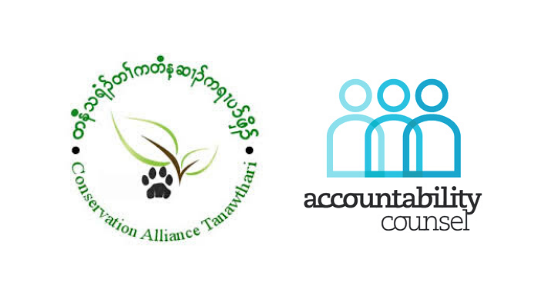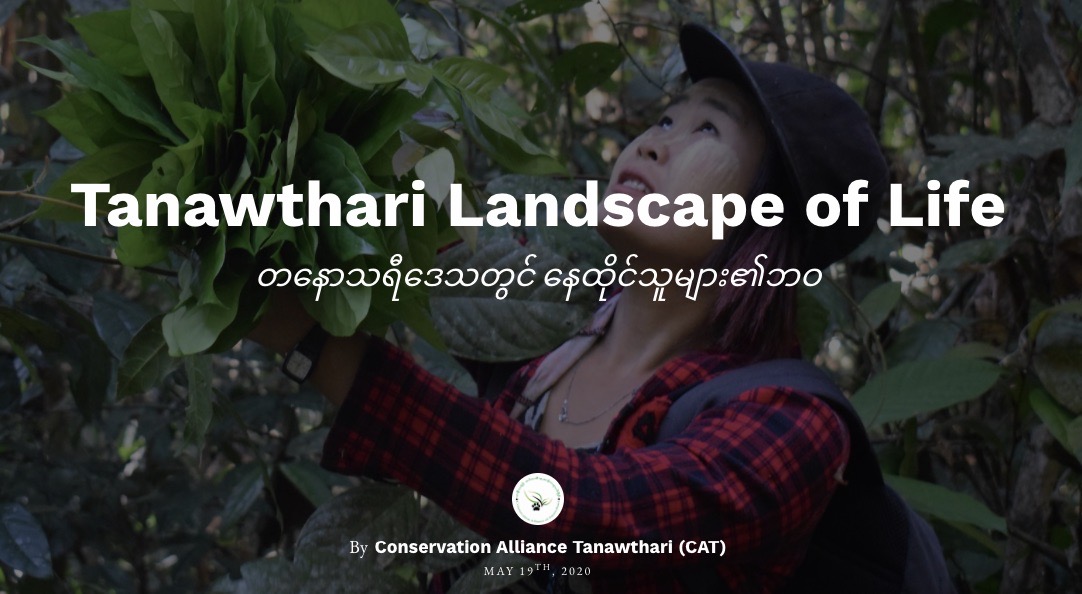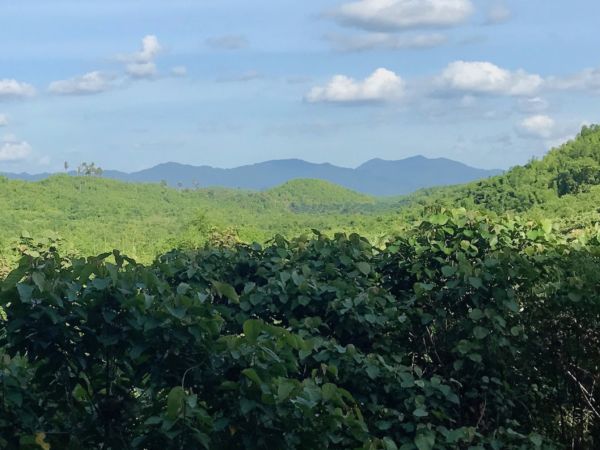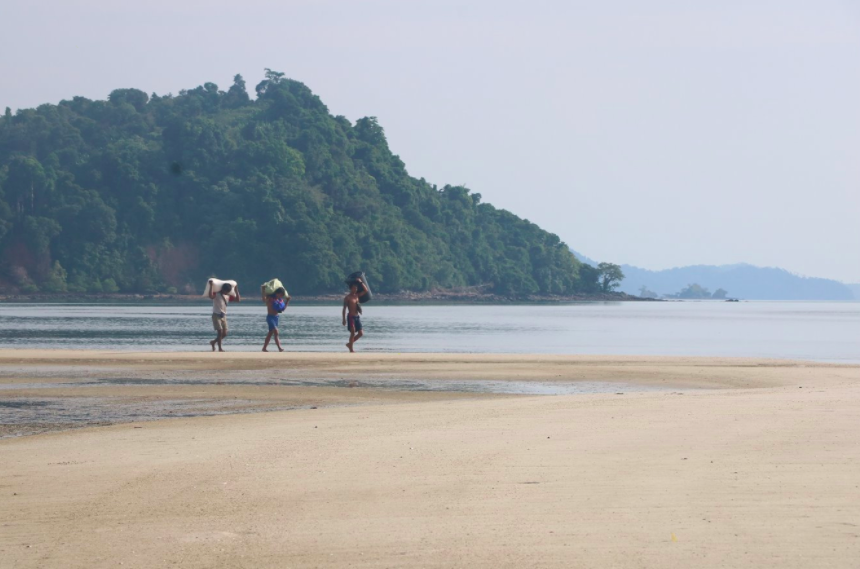Karen Indigenous groups launch their conservation vision for Myanmar’s Tanintharyi Region, rejecting the harmful ‘Ridge to Reef’ Project

DAWEI, 22 May 2020 – Today, an alliance of Karen community groups calls on their government and the international community to abandon a destructive, top-down conservation project that threatens their environment and way of life. They offer an alternative in its place – an indigenous-led conservation plan, called Landscape of Life, that both protects the rich biodiversity of the Tanintharyi Region, and respects traditional peoples’ knowledge.
On the International Day of Biodiversity, Conservation Alliance Tanawthari (CAT) calls on donors, international organizations, and the Myanmar government to abandon the Ridge to Reef Project, a $21 million mega-conservation project that seeks to establish a network of Protected Areas covering 3.5 million acres with financial backing from the Global Environment Facility (GEF) and United Nations Development Programme (UNDP).
The project was suspended after community members and CAT submitted a complaint to the UNDP’s watchdog, asserting that the project was established without the Free Prior Informed Consent (FPIC) of indigenous communities in the area. “We indigenous people didn’t know anything about this project. We never heard of it before. We didn’t even understand the meaning of the words ‘Ridge to Reef.’ They didn’t respect our right to FPIC,” said Saw Min Yan, a community leader from Hein Line, a village located within the project bounds.
Communities fear the project would result in harm to their lives and livelihoods, including restriction of access to traditionally managed lands and forests, the foreclosure of the rights of refugees to return to their lands, and an exacerbation of political tensions between the KNU and Myanmar government. “We do not want this project,” continued Saw Min Yan.
The rich biodiversity of the Tanintharyi Region has been managed and protected for generations by indigenous communities according to traditional knowledge and management practices. “Conservation is not new for us. We are continuing the practices of our ancestors, who had proverbs like ‘eat and conserve’,” said Saw Kho, an indigenous leader from Kamoethway.
A growing body of evidence suggests that indigenous land and forest management is key for the successful protection of biodiversity around the globe. While international conventions and organizations have started to adapt to this new paradigm, the Ridge to Reef project remains an outlier – projecting an outdated form of fortress conservation that has been widely condemned.
Anirudha Nagar, a lead lawyer at Accountability Counsel, an organization supporting CAT through the UNDP complaint process, said “the UNDP and GEF now have a unique opportunity to back the communities’ Landscape of Life. Development finance organizations can successfully support communities directly, with examples like the World Bank’s ‘Dedicated Grant Mechanism for Indigenous Peoples and Local Communities’ putting communities in the driver’s seat when designing and implementing projects. This direct financing modality is now ripe to be replicated and scaled across Tanintharyi.”

Landscape of Life offers an alternative vision of conservation for Tanintharyi Region
CAT’s report, Tanawthari Landscape of Life: A grassroots alternative to top-down conservation in Tanintharyi Region, presents a vision of indigenous landscape conservation in which interconnected, locally managed territories link up to form a contiguous indigenous landscape – a landscape of life. The KNU Forest Department (KFD) are also in the process of establishing and strengthening their wildlife sanctuaries and conserved forest areas. The Landscape of Life represents a bridge to connect these conserved areas up to maintain wildlife corridors and improve conservation across the Region.
Saw Paul Sein Twa, Director of KESAN, a member of the CAT alliance said: “Conservation of small areas will not work. Indigenous peoples conserve their territories through a landscape approach by seeing the interconnections through the landscape – we have seen this through the example of the Salween Peace Park. Now it is time for governments, international organizations, businesses and the UN to learn from indigenous people.”
Tanintharyi Region is an area of extreme ecological importance. The Region is home to some of the largest intact expanses of low-elevation evergreen forest, whose rich biodiversity includes substantial tiger, tapir and pangolin populations. The coastal areas are protected by some of the best-preserved mangrove forests in the Region, opening out into the vast Myeik archipelago and harbouring unique marine and island ecosystems.
“The Tanawthari Landscape of Life is a vision of community driven conservation, of harmonious relationships between humans and nature, and of lasting peace,” said Naw Ehhtee Wah, CAT coordinator. “We hope that international organizations, donors, and the Myanmar government will hear our calls and support this vision, rather than making plans without us.”
For more information, contact:
- CAT: Naw Ehhtee Wah (Burmese, Karen, English), ehhteewah@gmail.com | Saw San Ngwe (Burmese, Karen), sanngwe22@gmail.com
- Accountability Counsel: Anirudha Nagar (English), anirudha@accountabilitycounsel.org
Explore the unique biodiversity and traditional way of life in Tanintharyi Region:
- CAT’s online photo exhibition
- Tanawthari Landscape of Life short film


